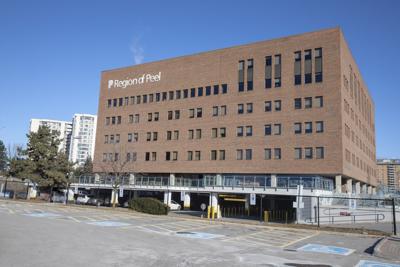Health Advocates at Peel Council Warn of Deadly Risks as Supervised Consumption Site Faces Shutdown
Brampton’s only supervised drug-use facility is on the chopping block, slated to shut down March 31, 2025, under new provincial rules. While Mayor Patrick Brown cheers the move, health workers and advocates at a recent Peel Region Council meeting sounded the alarm over its life-threatening fallout.
The Peel Urgent Public Health Need Site (UPHNS) at 10 Peel Centre Dr. drew heated debate at the Feb. 27 council meeting. Set to close due to Ontario’s Bill 223—the Safer Streets, Stronger Communities Act, 2024—the site’s fate has split opinions. Launched in 2022 after a unanimous council vote, the interim operation, run by Moyo Health & Community Services (MHCS) with WellFort Community Health Services, aimed to curb the opioid crisis flagged in Peel’s 2019 Opioid Strategy.
Eliza Chappel, a peer support worker with MHCS, laid bare her story at the meeting. A former fentanyl user starting at 17, she credits the site’s support for her four-year sobriety. “Without Moyo and WellFort’s evolving services, I wouldn’t be here,” she said. Chappel painted the UPHNS as a lifeline—a judgment-free zone where users felt human. “We’ve been told to hide for too long. This was a place where people were seen and safe.”
The site operated under a Health Canada exemption, allowing supervised drug use and testing. But Bill 223 bans municipal backing for such sites without provincial nod, and on Jan. 24, the Ontario Ministry of Health warned Peel that hosting it at the region-owned property violates the law. By Feb. 10, MHCS learned its federal exemption won’t extend past March 31. Peel staff argue MHCS, not the region, sought the exemption, but they’re complying to dodge legal heat.
Natalie Lapos, Peel’s acting director of chronic disease and injury prevention, shared early data showing opioid deaths dipped from March to June 2024 since the site opened. “These services save lives and cut drug-related harm,” she said. Peel Public Health tallied 705 opioid deaths from 2019 to 2023—a 34% jump—with 70 more from January to September 2024. Nearly half occurred alone, with naloxone used in just 17% of cases.
Lapos stressed the site’s clean record: no incidents, no loitering, no needles found in daily sweeps, and zero police or paramedic calls. A 60-day wind-down post-closure will ease users into other supports.

Yet Brown contested the “no complaints” claim. “We’ve heard gripes in wards 7 and 8,” he said, backed by Coun. Pat Fortini, who insisted issues abound. Peel Region Chair Nando Iannicca pushed back, questioning if complaints targeted the site or the concept itself. “I’ve checked with the CAO—we’ve had few on-site problems,” he said, calling for a future health briefing to settle it.
Jillian Watkins, MHCS executive director, touted the site’s impact: 210 unique users by January 2025, bolstered by partnerships for housing, mental health, and addiction aid. “People used drugs safely here—no hospital trips, no public use in parks or stalls,” she said. Watkins fired back at Brown’s Toronto Sun op-ed with Fortini and Coun. Rod Power, which hailed the closure but claimed it fueled addiction and littered needles—assertions she called baseless. “That rhetoric spreads misinformation,” she told Mississauga News. “The truth matters.”
Watkins sees hope in advocacy. “Policies shift. If enough voices rise, funding could return.” For now, the closure looms, pitting Brown’s approval against fears of lost lives

